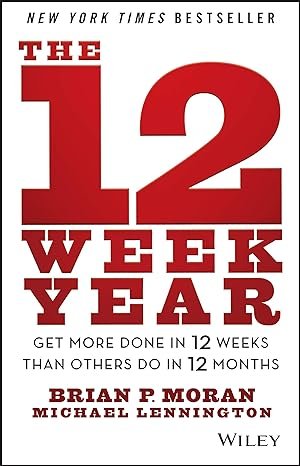“Influence” by Robert B. Cialdini
“Influence: The Psychology of Persuasion” by Robert B. Cialdini is a widely acclaimed book in the field of psychology and marketing, first published in 1984.
The book explores the psychology behind why people say “yes” and how to apply these understandings in various aspects of life.
Cialdini, a professor of psychology and marketing, presents his insights through the lens of what he calls the six key principles of influence:
Reciprocity:
The idea that people feel obligated to return favors or kindnesses that others have done for them.
This principle shows how small gestures can lead to a sense of indebtedness.
Commitment and Consistency:
People have a deep desire to appear consistent in their actions and beliefs.
Once they commit to something, verbally or in writing, they are more likely to honor that commitment.
Social Proof:
Individuals look to others around them to determine how they should think, feel, and act.
The principle of social proof is powerful in situations where people are uncertain about the correct course of action.
Authority:
People tend to respect and follow the lead of legitimate authorities or experts. This principle highlights the influence of perceived authority in decision-making.
Liking:
People are more easily influenced by those they like.
This liking can come from physical attractiveness, similarities, compliments, cooperative endeavors, and other factors.
Scarcity:
The perception of scarcity generates demand. People are more likely to want something if they believe it is in short supply or available for a limited time.
Cialdini combines these principles with real-world examples and research to explain how and why people can be influenced.
He also offers advice on how to defend against these tactics.
“Influence” is considered a seminal text in the fields of marketing, psychology, and negotiation, and it has been influential in understanding the mechanics of persuasion in everyday life.
“The Challenger Sale” by Matthew Dixon and Brent Adamson
“The Challenger Sale: Taking Control of the Customer Conversation” is a business book authored by Matthew Dixon and Brent Adamson.
Published in 2011, it presents a sales approach based on extensive research by the Corporate Executive Board (CEB).
The book challenges traditional sales methods and introduces a new approach to modern sales techniques.
Key aspects of the book include:
The Challenger Model:
The authors identify five types of sales representatives – The Hard Worker, The Challenger, The Relationship Builder, The Lone Wolf, and The Reactive Problem Solver.
Among these, the ‘Challenger’ is identified as the most effective, especially in complex sales environments.
Teach, Tailor, and Take Control:
The Challenger sales approach is based on three core activities:
Teach: Challengers educate customers with new insights about how their company can operate more effectively or make more money.
Tailor: They tailor their sales message to the customer’s specific needs and objectives.
Take Control: They are comfortable discussing money and are assertive in pushing the customer out of their comfort zone, maintaining control of the sales conversation.
The Challenger Approach in Complex Sales:
The book argues that the Challenger approach is particularly effective in complex, B2B sales environments where customer needs are more intricate.
Sales and Customer Interaction:
The focus is on the interaction between sales reps and customers, emphasizing the importance of understanding the customer’s business, challenging their thinking, and providing unique solutions.
Sales Organization:
The authors also discuss how companies can adopt the Challenger sales model organizationally, including training and developing sales teams to adopt these techniques.
“The Challenger Sale” has been influential in reshaping how companies approach their sales strategies, moving away from traditional relationship-building models to a more assertive, informed, and customer-challenge-focused approach.
The book is widely regarded as essential reading for sales professionals and business leaders looking to improve their sales effectiveness in increasingly complex and competitive markets.
“The 12 Week Year” by Brian P. Moran and Michael Lennington
“The 12 Week Year” by Brian P. Moran and Michael Lennington is a guide to increasing productivity and achieving goals by changing how individuals and teams view and manage time.
The central premise of the book is that a year, the traditional framework for goal-setting and planning, is too long a period to maintain a high level of focus and urgency.
Instead, the authors propose breaking down the year into four 12-week periods, essentially creating a “year” within each quarter.
Key concepts of the book include:
Twelve-Week Year Framework:
The book argues that shorter time frames heighten urgency, focus, and commitment.
By operating in 12-week cycles, individuals and teams are more likely to stay engaged and execute their plans effectively.
Goal Setting and Planning:
The authors emphasize the importance of setting specific, measurable, and achievable goals for each 12-week period.
The planning process involves breaking down these goals into actionable steps and allocating time effectively.
Execution and Accountability:
A major focus is on the execution of the plan. The authors stress the importance of discipline and consistency in daily actions that align with the set goals.
They also highlight the role of accountability and regular progress reviews to stay on track.
Time Management:
The book provides strategies for managing time efficiently, arguing that effective time management is crucial for accomplishing goals within the condensed timeframe.
Vision and Commitment:
Moran and Lennington discuss the importance of having a clear vision and a strong commitment to the goals set for the 12-week year.
This vision helps in maintaining motivation and focus throughout the period.
Measuring Performance and Tracking Progress:
The book advises on ways to measure performance and track progress towards goals, which is critical for understanding what’s working and what needs adjustment.
“The 12 Week Year” is designed for anyone looking to improve their productivity and achieve their goals more quickly.
The approach is applicable to both personal and professional goals and has been adopted by individuals, teams, and organizations looking to maximize their effectiveness and results.




















